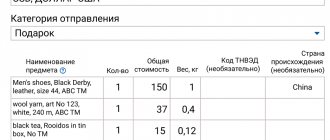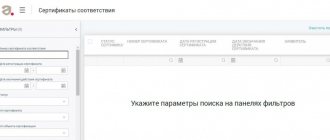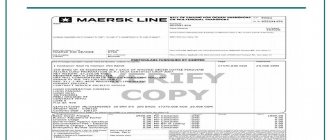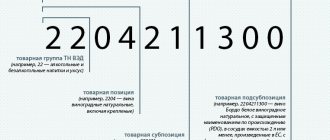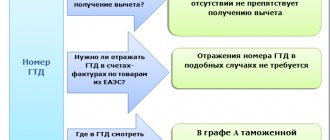The idea to automate the decision-making process on goods declarations appeared along with the introduction of electronic declaration into widespread practice. In recent years, the customs authorities of the Russian Federation have made significant progress in the use of automatic decision making - there has been a transition from experiments to daily use at all customs posts.
In this article we will look at one aspect of automatic decision-making on customs declarations - automatic registration and automatic release of a transit declaration (TD). The technology for automatic registration of electronic transit declarations began to be implemented in April 2021 and is now a routine part of customs clearance. Please note that the algorithms for automatic checks of compliance with the conditions of automatic registration and automatic release of goods, implemented in the standard software of customs authorities, are information for limited official use and are not subject to distribution. In addition, customs authorities are constantly improving them. And as a result, we still do not fully know how it works and on the basis of what criteria decisions are made.
Therefore, the main goal of our article is to summarize experience and help participants in foreign trade activities to avoid mistakes that may interfere with the successful automatic registration and automated issuance of transit declarations during the customs transit procedure.
Electronic transit and automatic decision making
The customs procedure of customs transit is one of 17 customs procedures under which the declared goods can be placed. Unlike other customs procedures, the transit procedure has its own form of customs declaration and the procedure for its submission. Further in this section we will look at one of the stages of filing a transit declaration electronically. After reviewing the filing order, we will highlight key points at which automated decision making may occur.
In Fig. 1 shows the general scheme of information exchange when submitting a transit declaration.
Rice. 1 General scheme of interaction during electronic transit
The key elements of the scheme are:
Declarant . By definition, this is the person who declares the goods, or the person on whose behalf the goods are declared. In the case of a customs transit procedure, a carrier may act as a declarant. The declarant's workplace is equipped with a software tool for preparing and submitting an electronic transit declaration, a means of cryptographic information protection, an electronic signature and has access to the Internet.
ED operator . An electronic declaration operator is a commercial organization that, on a contractual basis with participants in foreign trade activities, provides access to the internal network of the customs authority for the transfer of electronic documents and information to it.
QUOTE FCS . The Central Information and Technical Customs Administration is a specialized regional customs administration that is part of the unified federal centralized system of customs authorities of the Russian Federation. The Central Information and Technical Customs Administration carries out activities to organize and ensure the operation of the Main Data Processing Center of the Federal Customs Service of Russia, the functioning of information and communication technology tools at the Management level, updating, and developing information and software tools of the Unified Automated Information System of Customs Authorities, as well as to ensure the formation of centralized information resources of customs authorities Customs authority for opening transit. The customs authority to which the electronic transit declaration is submitted and in the region of operation of which the declared goods are located. The customs authority checks the transit declaration and issues it.
Customs authority for completing transit . The customs authority, which is indicated in column 53 of the transit declaration. At this customs office, electronic transit is completed after the arrival of the vehicle.
Carrier . According to the definition, a carrier is a person carrying out transportation (transportation) of goods and (or) passengers across the customs border of the EAEU and (or) transportation (transportation) of goods under customs control across the customs territory of the EAEU. If the carrier is not a declarant, the information system of the customs authorities can send the carrier information about the progress of transit (opening of transit, completion of transit, etc.).
The detailed procedure for information exchange when filing a transit declaration can be found in the article on our website. The procedure itself can be divided into four stages: operations performed before filing the TD; registration and issue of transit declaration; transportation operations; completion of transit. In Fig. 2 presents the second stage of submitting a transit declaration. At this stage, automatic decisions are made on the transit declaration.
Rice. 2 Second stage of filing an electronic transit declaration
According to the above diagram, information exchange includes the following exchange states:
Submission . The customs official, after receiving information about the UIN from the declarant (or carrier), uploads the transit declaration and documents into the “Transit Operations” CPS. After downloading, the ETD is considered submitted.
Errors . This condition is optional. The customs authority may refuse to register the ETD or send a protocol of identified errors to the FLC.
Registration . If there are no grounds for refusal to register an electronic transit declaration, the authorized official of the customs office of departure registers the electronic transit declaration. Information about TD registration is transmitted to the declarant. Note that in practice the information system of the customs authorities acts as an official, which makes the decision on registration.
Requests . This condition is optional. During the verification of documents and information specified in the transit declaration, the customs authority has the right to request additional documents.
Adjustment . This condition is optional. The declarant may revoke the transit declaration after its registration until the moment of issue, as well as make changes to it.
Release . The release of goods is carried out when the conditions for placing goods under the customs transit procedure are met. The decision on release may be made by a customs official or an information system.
In Fig. Figure 3 shows a diagram of automatic decision-making on a transit declaration. The diagram separately shows the system of automatic registration and automatic (automated) release.
Rice. 3 Scheme for automatic decision-making on a transit declaration
Automatic decision-making on a transit declaration occurs in two stages: at the first stage, the declaration is checked according to the criteria of the automatic registration algorithm. If all automatic registration criteria are met, the declaration is transferred to the second stage for verification against the automatic release criteria. If at least one of the auto-registration or auto-release criteria is not met, then the declaration goes into a queue for a customs official to make decisions on the transit declaration manually. In practice, customs officials in most cases will not register a transit declaration unless it has been automatically registered. This is why it is important to know what conditions must be met for automatic registration. To do this, in the next section we will consider the main criteria for automatic registration of transit declarations.
Electronic customs declaration - design features
Immediately after the introduction of the electronic customs declaration system, the ED-1 scheme, innovative for that time, was widely used. It provides for the transfer of graphic files over a distance. To give the information the proper form and send all the necessary papers, special equipment is required. A company employee connects to the departmental network exclusively through those communication channels that are responsible for accepting requests for customs declarations for imported goods.
At the moment, this method is used relatively rarely, since sending documents exclusively in graphic format provides limited opportunities for checking information and monitoring documents. Laying channels to ensure accessibility to customs authorities takes a lot of time and material costs.
According to the ED-2 system, the interested person has the opportunity to submit documents via the Internet, since this type of customs electronic declaration is classified as a second generation type. Information is transmitted over the Internet, but only a specific access node is necessarily involved. To do this, it is advisable to use the services of an operator. To complete the declaration, documents sent in electronic form are used. Interaction with such papers is well established, since the software used for this is already well known to declarants.
Automatic registration criteria
If the transit declaration has not passed automatic registration or automatic release, the information system of the customs authorities generates a protocol of verification violations. Examples of protocols are presented in Figures 4 and 5. Guided by this protocol, the declarant can make the necessary corrections to the transit declaration to undergo automatic registration and automatic release upon subsequent submission of the TD. Let us note that the information given in the protocols is not always communicated to the declarant, and then it is much more difficult to look for inaccuracies in the transit declaration.
Rice. 4 Example of a protocol for violations of checking the automatic registration algorithm
Rice. 5 Example of an automated release algorithm verification violation protocol
Next, we will analyze the different verification criteria and show what you should pay attention to in the transit declaration.
1. Group 180, code T002. Automatic registration of the submitted ETD is carried out during the work of the customs authorities. Situation: ETD was submitted to the customs authority (10412190) during non-working hours.
You cannot submit transit declarations outside of customs office opening hours. The automatic registration system controls this requirement with one of its criteria. Solution: wait until the customs office starts working and re-submit the TD.
2.Group 180, code T007. Column 3 of subsection 1 of the ETD should not contain a value. Situation: The third subsection of column 1 of the ETD is not completed.
The declarant did not fill out (clear) the 3rd subsection of column 1, and because of this, the TD did not undergo automatic registration. Solution: fill out section 3 of column 1 with the correct information and submit the TD again.
3. Group 180, code T010. Monitoring the availability of confirmation of arrival in the automated control system using the customs invoice number. Situation: confirmation of arrival, requested using the details of the waybill (document code 10045) with number 10000000/021219/0013332/001, is not available in AS “PP”.
For a transit declaration under TT IM, declarants often indicate “Information on notification of the arrival of goods to the customs territory of the EAEU” under code 10045 in column 44. Due to typos in the arrival registration number, the customs information system cannot find the required arrival, and auto-registration does not work. In our practice, there was a case when a similar situation occurred due to incorrect indication of the vehicle type code: in the arrival and preliminary information there was code 30, and in the transit declaration 31.
4. Group 180, code T013. Checking the presence in AS "PP" of confirmation of arrival using the railway waybill number (taken from column 44 of the ETD for a document with a code of the form "02013"). Situation: confirmation of arrival, requested using the details of the waybill (document code 02013) with number: 11559643, is not available in the AS “PP”.
If the declarant under TT IM under code 10045 in the 44th column did not indicate the registration number of arrival, then to carry out the reconciliation, the information system of the customs authorities searches for data in the automated system of the checkpoint for data on the number and date of the bill of lading. If the related information is not found, then auto-registration does not occur. This can happen due to typos in the TD or in the arrival data. Solution: indicate the arrival registration number in column 44 and resubmit the TD.
5. Group 180, code T014. Checking information about the product code (at the level of 6 characters) in the confirmation of arrival (from AS “PP”), with information in column 33 of the ETD. Situation: column 44 of the ETD, there is no document with code 02011 for the request to AS “PP”.
For automatic registration, the information system of the customs authorities checks the data on the HS code with the corresponding code upon registered arrival. The invoice number is used to complete the request. In this situation, sea transport was indicated as the mode of transport and the information system of the customs authorities could not find the bill of lading in the 44th column. Solution: indicate the bill of lading number in column 44 and resubmit the TD.
6. Group 180, code T015. Checking information about the weight (gross) of goods in the confirmation of arrival (from AS “PP”) with information in column 35 of the ETD. Situation: Column 44 of the ETD there is no document with code 02011 for the request to AS “PP”.
The information system of the customs authorities checks the information on the gross weight declared in the TD with the information in the confirmation of arrival. This information may be taken from previously submitted preliminary information. In this situation, the declarant did not indicate information about the transport document in column 44 of the TD and no reconciliation took place. Solution: indicate the invoice number in column 44 (recreate the inventory and formalize the invoice) and resubmit the TD.
7.Group 180, code T022. Checking the presence in column 50 of the ETD of the following information about the declarant: TIN, KPP, OGRN, name, location address. Situation: column 50 of the ETD: OGRN of the declarant is not filled out.
After the introduction of automatic registration of the transit declaration, it became clear that for Russian organizations in the details columns (2, 18 and 50) of the TD it is necessary to enter the TIN, KPP and OGRN. Very often in practice there is a situation when in the 50th column for the carrier they forget to indicate the TIN, KPP, OGRN (see Fig. 6). Solution: enter the required information and submit the TD again.
Rice. 6 INN, KPP and OGRN for the carrier are not indicated
In this case, the problem was different: the declarant was an individual who did not have a OGRN. To remove this error, the declarant tried many different options, but specifying the value “000000000000000” as the OGRN helped (see Fig. 7). Please note that filling out the OGRN in this way is incorrect, but this allows us to solve the problem with auto-registration. Then, after registration, you can correct the TD and clear the OGRN field.
Rice. 7 Filling out the OGRN for the declarant
8.Group 180, code T028. Checking the expiration date of the document certifying the person’s authority to submit an electronic document, which must be greater than or equal to the date of registration of the electronic document. Situation: in column 44 of the ETD there are no documents with codes 11003, 11004.
The information system of the customs authorities checks the document specified in the TD, which certifies the person who prepared the declaration. This criterion verifies the validity period of the power of attorney. In this situation, the declarant did not indicate the power of attorney in column 44 of the TD. Solution: indicate the power of attorney in column 44, re-create the inventory, formalize the power of attorney and place it in the electronic archive of the declarant.
9. Group 180, code T029. The date of issue of the document certifying the person’s authority to submit the ETD must be less than or equal to the date of registration of the ETD. Situation: in column 44 of the ETD there are no documents with codes 11003, 11004.
The information system of the customs authorities checks the document specified in the TD, which certifies the person who prepared the declaration. This criterion verifies the date of the power of attorney. In this situation, the declarant did not indicate the power of attorney in column 44 of the TD. In practice, there may be an error in the power of attorney itself (see Fig. 8), then the power of attorney should be corrected and re-placed in the declarant’s archive.
Rice. 8 Document certifying the authority of the person who compiled the DT
10. Group 180, code T030. When the type of identity document must correspond to the information in the reference data.
The information system of the customs authorities checks the information about the declarant’s identity card specified in the TD. The automated system verifies the code of the identity document using the classifier. In this situation, the declarant did not indicate the passport code RU01001 (see Fig. 9). Solution: indicate the ID code and resend the TD.
Rice. 9 Passport code not specified[
11. Group 180, code T031. The date of issue of the identity document must be less than or equal to the date of registration of the electronic document. Situation: in column 44 of the ETD there are no documents with codes 11003, 11004.
The information system of the customs authorities checks the information about the declarant’s identity card specified in the TD. The information system checks the date of issue of the document and the date of registration of the transit declaration. In this situation, the declarant did not fill out the passport date.
12. Group 180, code T032. Check for the presence in column 44 of the ETD of the document type code 11002, in the case of a customs representative of the declarant. Situation: the document with code “11002” does not contain document identifiers in the EAD, number or date.
If the transit declaration is submitted by a customs representative, then in the 44th column of the transit declaration it is necessary to declare under code 11002 “Agreement with the customs representative.” Solution: indicate the customs representative’s clause in column 44, re-create the inventory, formalize the agreement and place it in the declarant’s electronic archive.
13. Group 180, code T033. Checking the compliance of the TIN, KPP, OGRN of the customs representative for compliance with the information in the electronic signature with which the PDD is signed. Situation: information 3822400640 contained in the register of customs representatives differs from the information in the electronic signature: 3822400641, with which the PDD was signed.
We are not ready to comment on this situation. It is worth noting that if the TD is submitted by a customs representative, then many more conditions are checked.
14. Group 180, code T039. Checking the declarant's TIN specified in the contract with the customs representative for compliance with the TIN specified in column 50 of the ETD. Column 50 of the electronic document: the document indicated by code 11002 is not included in the electronic document.
If a transit declaration is submitted by a customs representative, then the declarant’s TIN under the customs representative agreement from the electronic archive is checked with the data in column 50 of the TD. In this case, the customs representative agreement was not indicated in column 44. Solution: indicate the customs representative agreement in column 44, re-create the inventory, formalize the agreement and place it in the declarant’s electronic archive.
15. Group 180, code T041. Checking the presence of “03014”, “03090”, “11002” or “11001” in column 44 of the electronic document, as well as the identifier of this document in the electronic document. Situation: the document certifying the person’s authority to submit an EDD does not contain document identifiers in the EDD.
The information system of the customs authorities will check the availability of the required documents in the 44th column and the electronic archive. In this situation, the declarant in column 44 under code 11001 did not indicate the series and number of the declarant’s passport. Solution: when preparing a TD, indicate the declarant’s passport under code 11001 in column 44 and place it in the electronic archive.
16. Group 180, code T048. If the carrier is not a declarant, the presence of the following information about the carrier in column 50 of the ETD is checked: TIN (if a Russian person), KPP (if a Russian person), OGRN (if a Russian person). name, location address. Situation: column 50 of the ETD: checkpoint (NULL) must contain 9 digits for the TIN (3829600222) of the carrier.
In this case, the declarant did not fill out information about the checkpoint in column 50 of the transit declaration (see Fig. 10).
Rice. 10 The carrier’s checkpoint is not filled in
17.Group 180, code T023. Column 50 of the ETD for the requested TIN (3807022409) information was not found in the Federal Tax Service. Situation: checking the presence in column 50 of the ETD of the following information about the declarant: TIN, KPP, OGRN, name, location address
This case is similar to the previous one, but here all the information in the transit declaration was indicated correctly by the declarant. Moreover, after an hour of searching and resending the TD, auto-registration occurred. It turned out that due to technical reasons, information from the Federal Tax Service was not received by the customs authority.
18. Group 180, code T060. Checking the indication in column 31 of the ETD of information under numbers 1 (general name of the product, as well as its description in accordance with commercial, transport (shipping) documents, sufficient for its identification by the customs authority) and 2 (indicates the number of packages or without packaging). Situation: Column 31 of the ETD does not contain the product packaging availability code.
The information system of the customs authorities controls the indication of information in column 31. If among the TD goods there are goods without the specified name or packaging information, then auto-registration does not occur. In this situation, the declarant indicated information about the packaging, but did not indicate the package availability code (see Fig. 11).
Rice. 11 The package availability code in column 31 is not filled in
19. Group 180, code T063. Checking the presence of product codes in column 33 of the ETD (minimum 6 characters). Situation: column 33 of the ETD must contain codes of goods from the Commodity Nomenclature of Foreign Economic Activity of the EAEU (at a level of at least the first 6 digits)
It would seem that the error is quite understandable and you need to correctly indicate the HS code in column 33 (at least the first six characters). However, declarants in practice are faced with a situation where the TD contains goods with a ten-digit HS code and six-digit codes, but the TD does not undergo auto-registration, and the protocol contains the indicated error. It turned out that the first 6 characters of the HS code can only be indicated if they are a subposition of the HS (there are branches from them). To solve this situation, you need to go through all the goods with six-digit HS codes and check them with the EAEU HS code directory. Example: in the 33rd column for furniture with a metal frame, the code 940171 is indicated in the 33rd column. As can be seen from Fig. 12, there is no such product subposition in the directory, and for auto-registration you need to indicate the subposition code 940171000 in the 33rd column. Note that in some cases you have to indicate the full ten-digit HS code.
Rice. 12 Directory VED-Info
20. Group 180, code T071. Checking the presence in the EAD of documents with codes: 02011, 02012, 02013, 02024, 02026, 02022, 02014, 02015, 02016, 02017, 02018, 02019, 02020, 02021, 02099, 04011, 0 4021, 04022, 04023, 04025, 04031, 04032, 04033, 04041, 04042, 04043, 04051, 04061, 04071, 04081,04082, 04083, 04091, 04101, 04102, 04111, 04113, 04115, 04121 , 04999, 09019, 09020, 09021, 09022, 09023, 09024, 09025, 09026. Situation: there are no document identifiers for the request in the EAD.
One of the problems with transit declarations is the correct placement of documents in the electronic archive of the declarant. If the data on documents in column 44 differs from the data in the inventory, then when generating an electronic copy of the transit declaration, the link to the electronic document in the declarant’s archive will not be correctly uploaded. This often happens when the declarant corrects the data in column 44, but forgets to make changes to the inventory. An example of such a situation is shown in Fig. 13. Solution: re-generate the list of documents (see Fig. 14) and, if necessary, re-attach the documents.
Rice. 13 Documents without reference to EAD in column 44
Rice. 14 Re-creation of the document inventory
21. Group 180, code T085. Error in checking the availability of confirmation of arrival in the PP AS using the customs number of the air waybill. Situation: confirmation of arrival, requested using the details of the air waybill (document code 02017) with the number 123-44425876, is not available in the AS “PP”.
In this situation, the declarant entered the invoice number in column 44 with an error.
22. Group 180, code T089. Checking for the presence in the second subsection from the left of column 52 of one of the codes of measures to ensure compliance with customs transit: '00', '01', '02', '03', '04', '07', '08', '63' . Situation: column 52: the security measure code is not specified.
This criterion is associated with filling out the 52nd column. The declarant did not fill it out due to the fact that the customs carrier was indicated in column 50. Solution: indicate the measure code in column 52 of the TD (see Fig. 15).
Rice. 15 Indication of the code of the security measure in the 52nd column of the TD
23. Group 180, code T090. Checking the correctness of the information specified in the first subsection on the left of column 52 of the ETD. Situation: subsection 1 of column 52 of the ETD, the specified security document with number [10000000/001019/00020] does not exist.
This criterion checks the correctness of the guarantee number in column 52. If the provided number is not found in the information system of the customs authorities, then auto-registration will not work. In this situation, the declarant indicated the security number with an error. You can check the collateral number in the form of a bank guarantee in your personal account on the FCS website (see Fig. 16).
Rice. 16 Information about security in your personal account on the FCS website
24. Group 180, code T093. If the information about the declarant does not match the information about the carrier (the check is carried out using the TIN), one of the documents is contained with a code of the form: “03011”, “03013”, “03014” or “03999”. Situation: column 44 of the ETD does not contain a single document of the type: “03011”, “03013”, “03014” or “03999”
We think that from the wording of this criterion it becomes clear that in column 44 of the TD and inventory the foreign economic contract must be indicated.
25. Group 180, code T099. If, based on the results of a request for information contained in the Unified State Register of Legal Entities in accordance with the information received from the Federal Tax Service of Russia in a regulatory manner, a response is not received within the established period, then a check is carried out for the presence of such information contained in the AIS “CRSVED”. In this case, the status code of the organization must be equal to “001” - “Current”. Situation: column 50 of the ETD: the declarant’s TIN (3808227270), declared in the ETD, does not correspond to the TIN (6686112667) in the electronic signature with which the ETD was signed.
The Russian organizations specified in the TD are checked against the database of the Federal Tax Service of Russia or the central register of subjects of foreign economic activity (AIS TsRSVED). In this case, the verification was successful, but when comparing the data about the declarant in column 50 with the data from the electronic signature, a discrepancy was revealed. This is possible if you select the wrong electronic signature or indicate erroneous information about the declarant: the carrier was indicated instead of the declarant, or if the TD is submitted from a customs representative, the latter’s license is not indicated.
26. Group 180, code T101. Subsection 3 of column 1 of the ETD should not contain the value “TS”. Situation: The third subsection of column 1 of the ETD should not contain the value “TS”.
Unfortunately, we were unable to understand why the program required changing the information in the first column. This is probably due to the data in column 53 of the transit declaration.
27. Group 180, code T108. Based on the results of the inter-document reconciliation, the information in the transport (shipment) document received from the EDS and the corresponding information stated in column 44 of the ETD must match: the gross weight of the cargo contained in the transport (shipment) document with the information specified in column 35 of the ETD. Situation: Column 35 of the EDS: the gross weight of the cargo [66000] does not correspond to the weight [68000] indicated in the transport document received from the EDS.
The information system of the customs authorities checks the weight information declared in the TD with the information from the invoice. The data from the invoice is taken from the electronic archive of the declarant. In this case, the declarant mistakenly uploaded an invoice with the wrong weight into the declarant’s electronic archive. Solution: formalize the invoice again with the correct weight and then place it in the archive.
28. Group 180, code T201. The presented document is not available in the EAD and AS “Electronic public services”. Column 44 of the PTD for the document with code [01201] does not have a document identifier in the EAD.
In this case, the declarant did not place the document in the declarant’s electronic archive. The customs information system attempted to request this document from the interdepartmental electronic exchange system.
29. Group 180, code T300. Checking the compliance of documents from column 44 and documents presented in the inventory according to archival identifiers and details. Situation: the following documents specified in column 44 of the electronic document do not have archival identifiers (used for requests from the electronic document): 04999 dated 2020-09-24 No. B/N.
This criterion is similar to the previous one, but here the document identifiers of column 44 and the list of documents are checked. Solution: re-generate the list of documents.
30. Group 180, code T507. Errors when checking FLC and KPS “Transit operations”. Situation: in the words of the name there are letters written in different alphabet.
This error primarily concerns the names of Russian organizations indicated in columns 2, 8 and 50. In practice, such an error is solved by re-entering the names of organizations (see Fig. 17).
Rice. 17 Error in sender name
Dispatch algorithm
The essence of dispatching is that the array of customs declarations is automatically distributed between the EDCs. A scheme has been developed taking into account the type of cargo, the transport by which they are transported, the competence and workload of officials. Moreover, the difference in time zones is also taken into account.
Declarations for energy cargo are processed at the Central Energy Customs Office. Declarations for excisable goods are automatically distributed to the Central Excise Customs Office. Sea cargo is declared in the Baltic, Novorossiysk and Vladivostok CEDs. Goods that arrive at the cargo terminals of the airports of the Moscow aviation hub are processed at the Aviation CED. The remaining goods are declared in the CEDs at the place of tax registration of the declarant (TIN/KPP), respectively:
| Place of tax registration | CED |
| Volga Federal District | Privolzhsky customs post of Privolzhsky electronic customs |
| North Caucasus Federal District | North Caucasus customs post of the North Caucasus electronic customs |
| Siberian Federal District | Siberian customs post of Siberian electronic customs |
| Ural federal district | Ural customs post of the Ural electronic customs |
| Northwestern Federal District (not Kaliningrad region) | North-West customs post of North-West electronic customs |
| Southern Federal District | Southern Customs Post of Southern Electronic Customs |
| Central Federal District (does not include the Moscow region and the city of Baikonur) | Central customs post of the Central Electronic Customs |
| Moscow (if the goods are located in the region of activity of the Moscow Regional Customs or in the Moscow region | Moscow regional customs post of the Moscow regional customs |
| Kaliningrad region | Kaliningrad customs post of the Kaliningrad regional customs |
Basically, about 5% of the entire declaration volume is redistributed, and this mostly concerns sea and air cargo.
The principle of distribution of declarations is established in the Draft Order of the Ministry of Finance of Russia “On the powers of customs authorities to register customs declarations.” The competence of customs authorities is secured by orders of the Ministry of Finance dated September 8, 2020 N 185n and dated October 19, 2020 N 238n.
